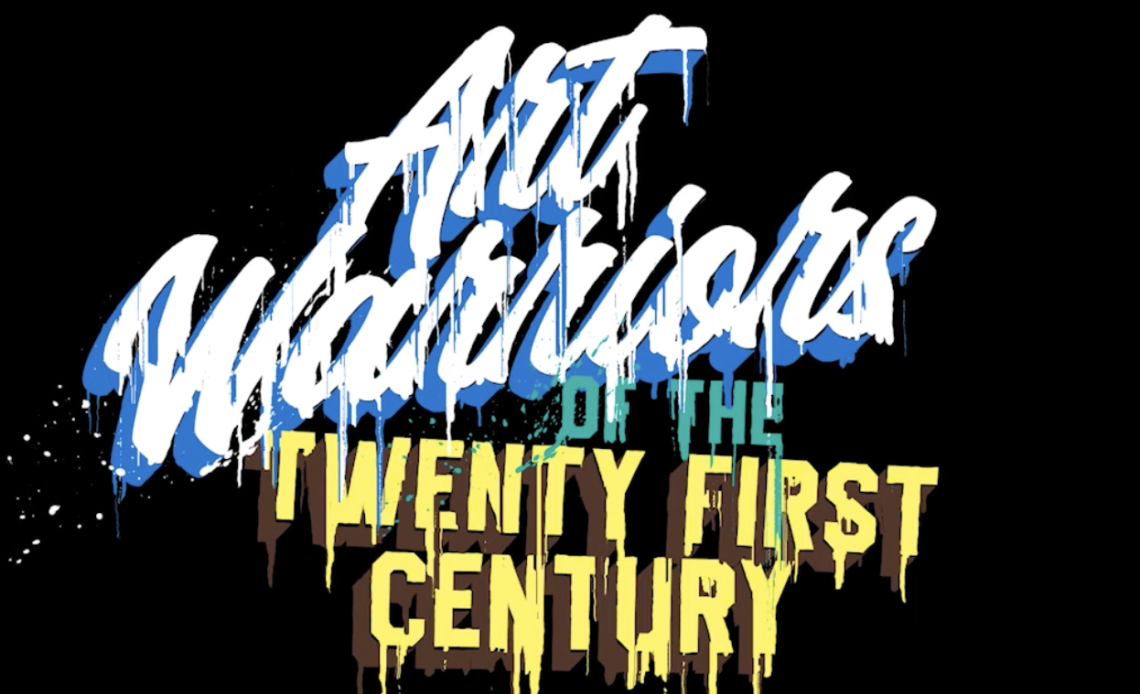Want to create a dripping paint effect for text or logos in Photoshop? This technique can give your designs a grungy, artistic look without the need for hand-painting. Instead, we will use filters and displacement maps to generate a realistic paint drip effect.
By the end of this tutorial, you’ll learn how to: ✅ Create realistic paint drips using Displace filters.
✅ Design a custom displacement map for smooth drips.
✅ Add wave distortions for a more organic look.
✅ Apply textures and blending modes for depth.
Now, let’s dive in! 🎨🔥
Step 1: Setting Up the Document
- Create a New Photoshop Document:
- Open Photoshop and go to
File > New. - Set the resolution to 3840×2160 (4K resolution for more detail).
- Set the background to black.
- Open Photoshop and go to
- Add Text or Logo:
- Select the Text Tool (T) and type your desired text.
- Use a bold font like Retro Mentho (linked in the tutorial).
- Center the text on the canvas.
This will be the base layer for our dripping effect.
Step 2: Creating the Displacement Map
To achieve realistic drips, we need to create a custom displacement map.
- Create a New Document (
File > New):- Set the size to match your main document (3840×2160).
- Fill the background with 50% gray (
Edit > Fill > 50% Gray).
- Apply the Fibers Filter:
- Set foreground and background colors to default (
Dkey). - Go to
Filter > Render > Fibers. - Adjust Variance = 15, **Strength = 5`.
- Set foreground and background colors to default (
- Adjust Levels for Contrast:
- Open
Image > Adjustments > Levels(Ctrl + L). - Set White Input to 40.
- Set White Output to 128 (50% gray).
- Open
- Apply Blur for Smooth Drips:
- Go to
Filter > Blur > Gaussian Blur. - Set the Radius to 4 pixels.
- Change the Blending Mode to Darken.
- Apply another Gaussian Blur (2 pixels) without changing blending.
- Go to
- Save as a PSD File:
- Name it “paint_drips_map.psd” and keep it handy.
This displacement map will define how the drips distort the text! 🖌️
Step 3: Applying the Displacement Effect
- Duplicate the Text Layer:
- Select the text layer, press
Ctrl + Jto duplicate. - Turn off the original layer (backup).
- Select the text layer, press
- Apply the Displace Filter:
- Go to
Filter > Distort > Displace. - Set Horizontal Scale = 0, Vertical Scale = 100.
- Click OK and select “paint_drips_map.psd” as the displacement map.
- Go to
- Repeat the Effect for Stronger Drips:
- Use
Ctrl + Alt + Fto reapply the filter multiple times. - Watch as the drips extend downward.
- Use
🔥 Pro Tip: If the drips aren’t strong enough, increase the Vertical Scale in the Displace settings!
Step 4: Making the Drips More Natural
Now, the drips look straight down. Let’s add organic waviness:
- Create a Selection of the Original Text:
Ctrl + Clickon the original text layer thumbnail.Shift + Ctrl + Ito invert the selection.
- Apply the Wave Filter:
- Go to
Filter > Distort > Wave. - Adjust:
- Number of Generators: 5.
- Wavelength Min/Max: 10 / 200.
- Scale: 10 / 10.
- Click OK to apply.
- Go to
This adds natural movement to the paint drips! 🎨
Step 5: Adding Paint Textures
To make it even more realistic, let’s overlay some paint textures.
- Import a Grunge Texture:
- Download a paint texture from texturelabs.org.
- Drag it into Photoshop and place it above the text layer.
Ctrl + Shift + Uto desaturate.
- Set Blending Mode:
- Change blending mode to Multiply.
- Reduce Opacity to 70%.
- Add Paint Splatters:
- Copy a paint splatter texture.
- Paste it above the drips.
- Change blending mode to Screen (for white splatters) or Multiply (for black splatters).
This step adds realism and texture to the effect! 🖌️
Step 6: Enhancing the Colors
Want to make the paint drips stand out? Try this:
- Use a Gradient Overlay:
Double-clickthe text layer to open Layer Styles.- Select Gradient Overlay.
- Choose a colorful gradient (blue, red, yellow, etc.).
- Set Blend Mode to Overlay.
- Adjust Shadows & Highlights:
- Apply
Image > Adjustments > Shadows/Highlights. - Increase Shadows to 20%.
- Increase Highlights to 15%.
- Apply
Now your drips will have more depth and realism! 🎨🔥
Step 7: Final Touches
- Duplicate the Text for More Layers:
Ctrl + Jto create a fainter duplicate.- Set the opacity to 50%.
- Move it slightly to the right for a shadow effect.
- Blur the Drips Slightly:
- Apply
Filter > Blur > Gaussian Blur. - Set Radius to 2 pixels.
- Apply
- Sharpen the Main Layer:
- Go to
Filter > Sharpen > Smart Sharpen. - Increase Amount to 70%.
- Go to
🎨 Final Look: Now, your dripping paint effect looks bold, textured, and realistic!
Conclusion
🎉 Congratulations! You’ve created a dripping paint text effect using Photoshop!


